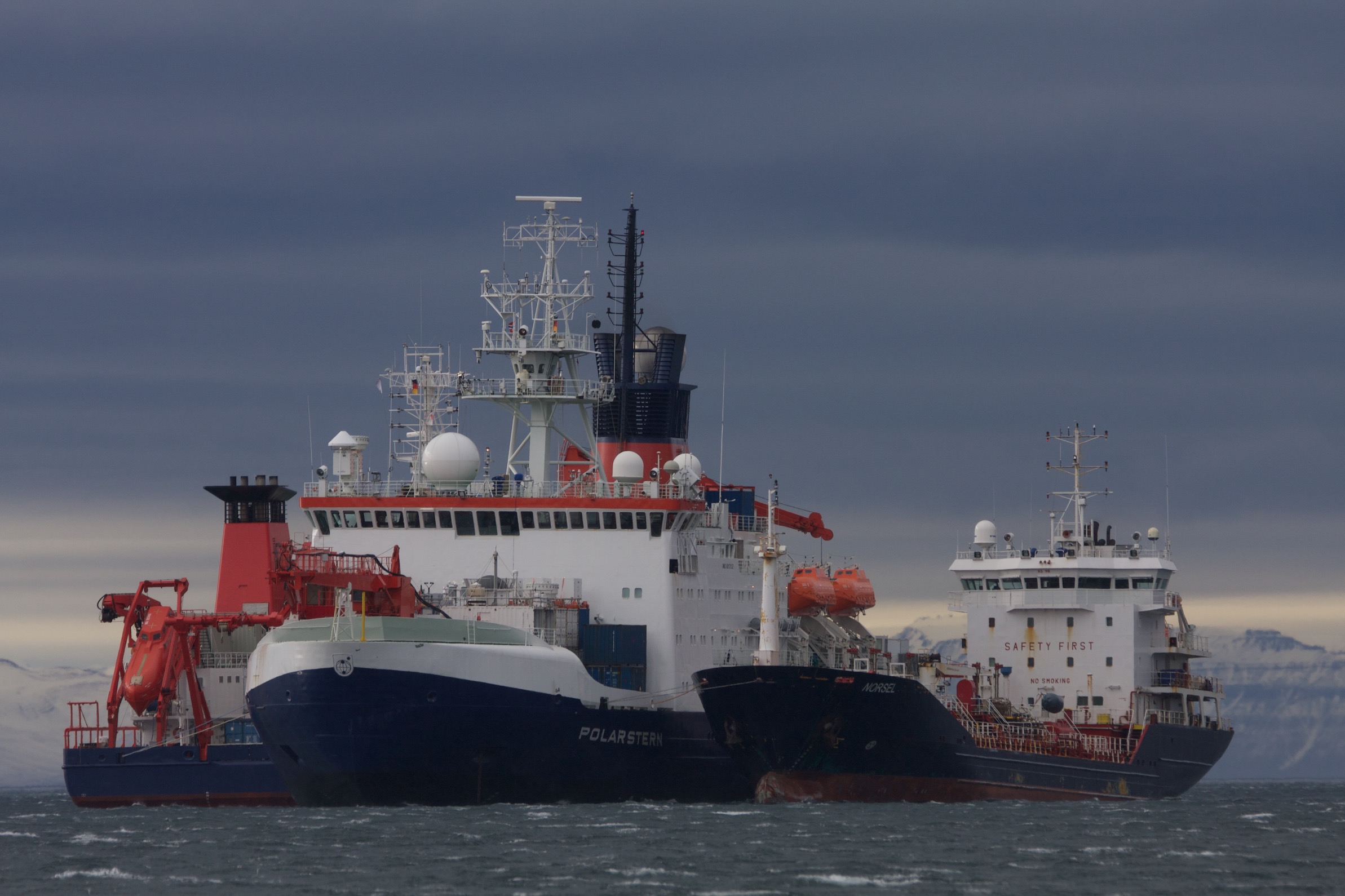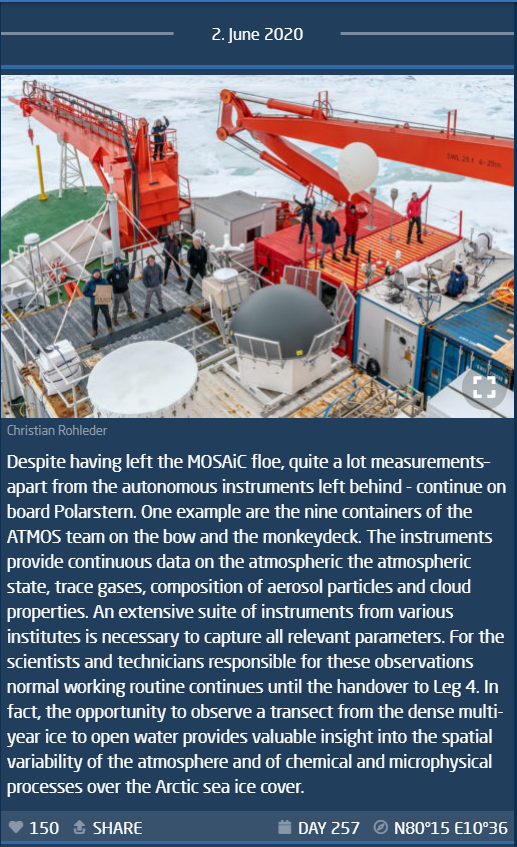ARM Nimbly Handles Change in MOSAiC Plans
Published: 18 June 2020
Instruments gathered data on icebreaker while it was away from the ice

Even out of the ice, the Atmospheric Radiation Measurement (ARM) user facility continued to collect important data for the 2019–2020 Multidisciplinary Drifting Observatory for the Study of Arctic Climate (MOSAiC) expedition.
Because of travel and logistical challenges related to the COVID-19 pandemic, the German icebreaker R/V Polarstern pulled out of its floe in the central Arctic in mid-May. The Polarstern then traveled to meet two German research ships (the R/V Sonne and the R/V Maria S. Merian) in waters near Svalbard, Norway, for the next crew and supply exchange. Upon completing the exchange in early June, the Polarstern steamed back toward the ice to begin Leg 4 of the expedition.
On the Polarstern, more than 30 ARM instruments gathered measurements during the icebreaker’s voyage. The Polarstern reached the floe June 17—almost a month after it left.
Although leaving the ice floe at this stage of MOSAiC was unexpected, ARM pulled in valuable data that it would not have gotten otherwise, says Heath Powers, site manager for the second ARM Mobile Facility (AMF2). Powers is based at Los Alamos National Laboratory (LANL) in New Mexico.
Meanwhile, ARM users can now find MOSAiC data through April 21 in the ARM Data Center. More than 30 datastreams—8 terabytes in total—were in the most recent data shipment, according to Giri Prakash, who manages ARM’s data services.
Technicians Save the Day

Before leaving the floe aboard the Polarstern, technicians John Bilberry, LANL, and Dean Greenamyer, Hamelmann Communications, removed ARM instruments that were on the ice as part of the Met City research area. Met City consisted of meteorological instruments from ARM; the University of Colorado, Boulder; the University of Leeds; and other institutions.
Gina Jozef, a PhD candidate in atmospheric and oceanic studies at the University of Colorado, Boulder, wrote about the dismantling of Met City in a blog post titled “Goodbye Met City” (scroll down to the fourth post on the page). On Leg 3, Jozef flew unmanned aerial systems as part of the MOSAiC Atmosphere team.
By May 14, the technicians got all ARM equipment onto the Polarstern before cracks in the ice shattered the Met City site and started to slice through the logistics area.
“I credit our techs on the ground (ice) who had enough foresight to pack and remove all our equipment from Met City in the nick of time,” writes AMF2 Operations Manager David Chu, LANL.
On June 2, heading toward Svalbard, Bilberry and Greenamyer appeared with several colleagues and ARM instruments in a MOSAiC blog post from the Alfred Wegener Institute, which leads the expedition.
Bilberry and Greenamyer are now off the Polarstern after completing Leg 3, rotating with technicians Juarez Viegas, Matthew Boyer, and Zoé Brasseur, all from Hamelmann Communications. The trio will oversee ARM instruments through Leg 4 and help rebuild Met City.
Shupe Back in Action
MOSAiC co-coordinator Matthew Shupe is on the Polarstern for Leg 4. Funded in part by the U.S. Department of Energy’s Atmospheric System Research (ASR), Shupe was on the first leg of MOSAiC when it began in September. He was originally supposed to rejoin the expedition this summer for what would have been the sixth and final leg, but MOSAiC’s schedule shifted—and so did his.
“With so much invested in the project over many years, I just could no longer stay on the sidelines,” he writes in a blog post on the Cooperative Institute for Research in Environmental Sciences (CIRES) website. “I could not wait until August to return.”
Read the rest of Shupe’s CIRES blog posts, and stay tuned for more MOSAiC updates.
Keep up with the Atmospheric Observer
Updates on ARM news, events, and opportunities delivered to your inbox
ARM User Profile
ARM welcomes users from all institutions and nations. A free ARM user account is needed to access ARM data.


















